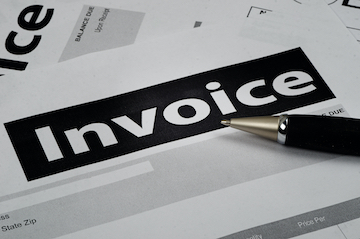The ongoing pandemic has exacerbated long-standing inefficiencies with the B2B accounts receivable process, such as manual entry, little standardization, and errant data.
Accounts receivable personnel have historically overcome many of these problems, but an increase in remote work may require B2B sellers to move to a more automated or integrated process.
Manual Processes
“In general, accounts receivable, particularly in a B2B context, can create challenges [for a business] because it’s much more manual than most people realize,” said Brandon Spear, president of MSTS, a B2B credit provider.

Brandon Spear believes that the pandemic has exposed problems in the B2B accounts receivable workflow.
These manual processes can exist at nearly any step in the accounts receivable workflow. As recently as 2017, a representative for a larger brand told me that orders from its popular B2B ecommerce site were printed and turned into its accounting department to rekey into the company’s siloed accounting software to create an invoice. This was done hundreds of times daily.
This particular B2B brand and perhaps many others had not consolidated the ordering process and still had a significant number of customers — think brick-and-mortar, ecommerce, or omnichannel retailers — submitting orders by email, phone, or (unbelievably) fax.
Not Standardized
The electronic data interchange is meant to solve just this sort of manual-process problem by electronically communicating purchase orders and invoices. Unfortunately, according to Spear, different organizations have implemented EDI differently, meaning that it may not be a true standard that B2B accounting teams can depend upon.
So while it is true that some industries have a common EDI standard, that level of integration is more likely between large sellers and large buyers.
The retail industry, for example, frequently has large brands selling to small or midsize companies — or the reverse. The larger firm often dictates to the smaller ones how an order or invoice must be submitted. This too can create manual processes as accounts receivable clerks might be forced to manually enter invoice information into a portal of some sort or create several invoice templates to match a buyer’s format requirements.
Missing or Errant Data
Manual processes and not enough standardization also contributes to the problem of missing data. An order could come in via fax that lacked important info or was illegible. Or, an account receivable clerk could hit an errant key or reverse a single digit in a long purchase order number.
“Imagine you’re a smaller supplier, and you’re sending your invoice into a large buying organization, and they don’t know what to do with it. They don’t know where to route it. They don’t know what expense bucket it goes to. Just trying to navigate your invoice through an internal accounts payable process can be complicated. And more often than not, that’s got to do with data missing from the invoice that would help AP identify it to know where it has to go,” Spear said.
Covid’s Impact
Before the global pandemic, the accounts receivable departments at many B2B brands slogged through these challenges. Some took pride in their abilities to run down problems or create systems to make manual processes and errors less of an issue.
“Now if you take those underlying base challenges [of manual processes, missing data, and similar], and then you overlay on top of it the fact that a lot of people are not physically in the office” it is easy to see the potential problems, Spear said.
Spear argues that the very people who were making the manual accounts receivable process function may, in the current environment, have less access to the information and resources they need. How, for example, would a system that relied on printing a B2B order and carrying it to an accounts receivable clerk for rekeying work now? Email? Slack? And how would invoices be sent?
“If your primary distribution mechanism for invoices is the post office, you can imagine how complicated that becomes all of a sudden because if your customer doesn’t have personnel who are receiving mail, opening mail, deciding what to do with the invoices…that creates delays. You could imagine that if the customer pays you via physical checks that could also create delays,” Spear said.
Accounts receivable inefficiencies, which existed before the pandemic, are now much worse, forcing some B2B accounting departments to move forward with new software and integrations. These companies may have had new software implementations on their roadmap for 2023 or 2025. But Covid-19 is transporting those businesses forward.
In the end, the pandemic might help make B2B accounting departments more efficient. It may help them manage credit better. And it could make doing business easier.







